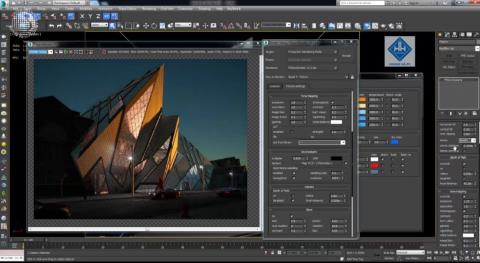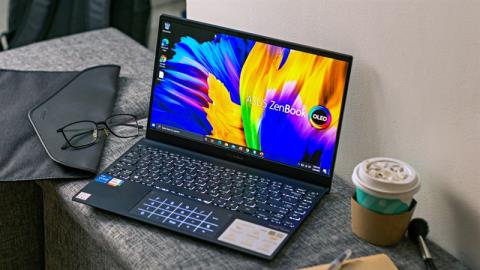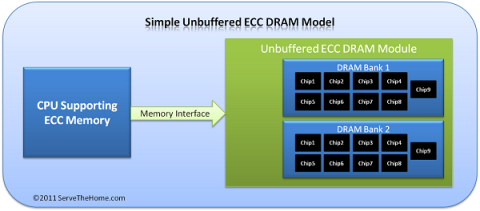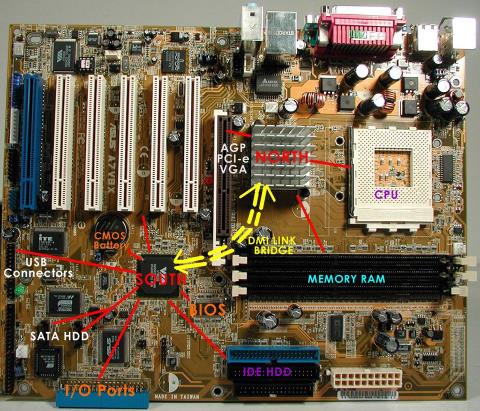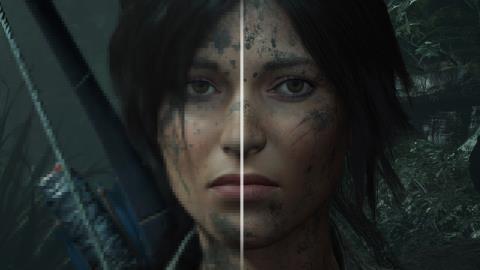What is 3uTools? How to install and use 3uTools in detail

3uTools supports users to manage utility applications more than the traditional way. Easy-to-use interface, will bring interesting experiences to you.
Currently, all quality monitors have integrated a technology called V-Sync, FreeSync, G-Sync, ... so is this technology important to the monitor? Why are so many screens now equipped with such a series of technologies? What role do they play? Let WebTech360 explain to you what is V -Sync, FreeSync,....
Before learning about V-Sync, we need to learn about tearing, tearing as the name implies, the phenomenon of frames being torn into many pieces, creating imperfect frames, making people users are uncomfortable because of broken parts.

Screen tearing usually occurs when the FPS (Frame Per Second) in the game is too high or lower than your monitor's refresh rate. Frame tearing is mainly due to the fact that the image does not display in time or is slower, leading to the new and old frames being overlapped, creating broken images.
That's why V-Sync, FreeSync... are the saviors for minimizing screen tearing to help overcome problems related to slow display of images that cause phenomenon like tape rewind.
V-Sync stands for Vertical Synchronization - vertical synchronization, we can understand this is a technology that synchronizes FPS with the refresh rate of the screen, this helps to reduce or completely eliminate screen tearing as well as optimization. visual experience for users. The core word is V-Sync , the terms related to the ability to eliminate screen tearing are FreeSync, G-Sync,... . also appeared.
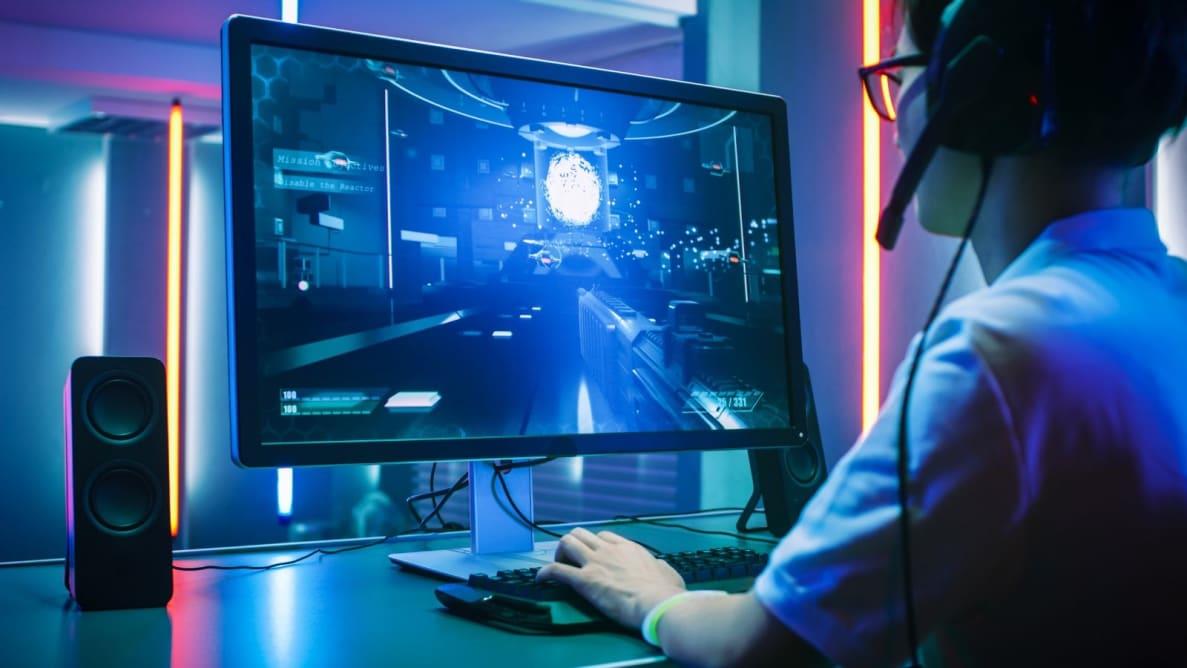
In essence, they are still identical to V-Sync , only about an action that is to synchronize FPS with the screen's refresh rate to minimize screen tearing. Their only difference is probably from the Source Code, or the companies themselves set up to market their monitors and graphics cards.
So depending on the hardware you are using, we will have the following types of Sync:
NVIDIA G-Sync: Frame sync technology developed by NVIDIA.
AMD FreeSync: This is AMD's FPS sync technology with refresh rate, with the aim of competing directly with NVIDIA's G-Sync.
VESA Adaptive Sync : Or often called Adaptive Sync and not as popular as the two names mentioned above. Adaptive Sync is a frame synchronization standard established by the Video Electronics Standards Association (VESA) as a standard for electronic companies to follow.
In addition, the names Apple ProMotion or Qualcomm Q-Sync are also related to the above definition. Maybe we do not see their appearance often or in today's popular screens.
At the present time, turning on V-Sync is no longer as necessary as it was a few years ago, inherently the software and hardware have been significantly upgraded, so that the gaming ability of the machines has also improved. more enhanced. So the story of tearing the picture seems to be forgotten. However, the role of V-Sync is still necessary in some cases, specifically for those of you who play games at too low FPS compared to the refresh rate. With V-Sync enabled, the graphics card will synchronize the fps with the monitor by repeating the same frame several times. Of course, gaming performance will not improve, but you will not experience screen tearing anymore.
At the present time, FreeSync and G-Sync are both introduced a lot on monitors, especially AMD's FreeSync monitors. The reason why FreeSync is more popular is that this technology is provided by AMD for free to manufacturers, which helps any monitor from low to high have AMD Free Sync technology integrated to avoid screen breakage. . Meanwhile, models equipped with G-Sync will only be suitable for users who trust NVIDIA graphics cards and at the time of their launch, G-Sync monitors are often very expensive and difficult to reach people. common use.
So if you are a user who likes an affordable experience, FreeSync is definitely a very reasonable choice because they are available on almost all monitors at a variety of prices, while G-Sync will suitable for NVIDIA graphics cards and will also be suitable for those who use high-end devices because a G-Sync monitor model has an extremely expensive price of at least 10 million.
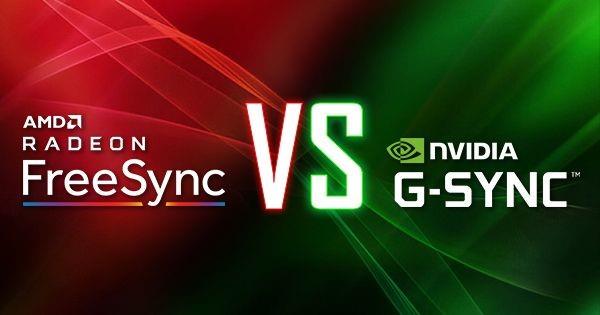
The above article has shown you the basics of V-Sync, FreeSync,.... Most games now have V-Sync in configuration options, which will give you more flexibility. in screen selection as well as providing a better game experience. As the writer now had to turn on V-Sync after playing Cyberpunk 2077, a heavy game that consumes a lot of data and the writer's machine does not exceed 60 fps.

Obviously experiencing V-Sync or G-Sync, Freesync, .... will bring smoothness in motion, you don't have to turn on this feature, but certainly turning it on will bring an experience. Better gaming experience, more stable and more comfortable and no freeze phenomenon.
3uTools supports users to manage utility applications more than the traditional way. Easy-to-use interface, will bring interesting experiences to you.
Rendering is the process of creating an image from a model into a movie scene or image using computer software.
The CPU is the data processing center, or simply understood, it is the brain that controls most of the rest of the components in a computer.
The GPU is the processor that handles graphics-related tasks for the CPU's central processor. Features on GPUs go far beyond basic graphics drivers like Intel's GPU
Flyer is a form of advertising, a marketing product that has existed for a long time, also known as leaflets, product marketing brochures.
ECC RAM is a type of RAM that has the ability to control the flow of data accessed in it to help automatically correct errors. ECC RAM has very high stability which helps you to reduce risk.
Ray Tracing is a technique that helps a computer create an image by tracing the path of light through pixels on the same image plane.
Chipset is a collection of chips, chipset refers to the chip on the mainboard or on the expansion card. On PC, commonly known as northbridge and southbridge.
Hyper threading is a hyper-threading technology and is known as Intel HT technology by globally famous technology manufacturer Intel.
The VRM circuit is the voltage regulator in the motherboard. With the presence of VRM, the CPU and GPU will be provided with clean power to operate stably.
Anti-aliasing is the main adjustment mode to help objects and people become softer and not angular, the game experience will also be better.
Animation is an age-old method in which people make motions of images based on still images.
Footage is unedited raw footage and footage. You can understand that footage is all the components that make up a video, and footage is very diverse.
Storyboard is a storyboard, consisting of a series of illustrations and accompanied by notes about what is going on, carrying the content of the story.
Discover the vibrant social scene of baccarat on Tedbet, where players worldwide connect, chat, and enjoy the excitement of live dealer games.
In the fast-moving digital landscape of the modern world, businesses can no longer afford to rely on systems that are only strong in one area.
Looking to create engaging product demos in minutes? Look no further! This guide will introduce you to the best tool for the job.
Discover the latest updates in Zooper Widget for Android. Zooper Widget is a compact, highly customizable, and battery-friendly widget with endless possibilities.
Lipp for iOS, alongside Dubsmash and Musical.ly, provides iPhone and iPad users with a new platform to create lip sync videos and dub videos readily.
Learn how to share audio using TeamViewer, including the latest updates for 2024 and 2025, making remote communication more effective.
Learn the latest tips on how to pet a cat in Adorable Home for optimal gameplay in 2024 and 2025. Discover what positions give you hearts.
Explore the latest features of OrangeHRM Open Source, a free HR management system tailored to meet evolving business needs in 2024 and 2025.
Fix IDM not catching file download links. Discover solutions for downloading videos, music, and more with the latest IDM updates in 2024 and 2025.
Discover the latest version of The File Converter for Android, an application that converts various file formats efficiently.
Explore the latest features of Zalo Web, allowing users to chat and connect seamlessly on various browsers without installation.
PDF Password Remover is a powerful tool for removing passwords and restrictions from PDF files. Download the latest version for 2024 to experience enhanced features.
Step-by-step instructions to completely remove Internet Download Manager (IDM) from your system in 2024 and 2025. Learn to uninstall IDM effectively and cleanly.
Discover Mindjet MindManager, an innovative software that helps individuals and teams streamline their work processes through effective mind mapping and project management.
Su DoKu 2.0.0 is an advanced Sudoku game design software that captivates enthusiasts with its simplicity and functionality. Download now and challenge yourself with Sudoku puzzles.
